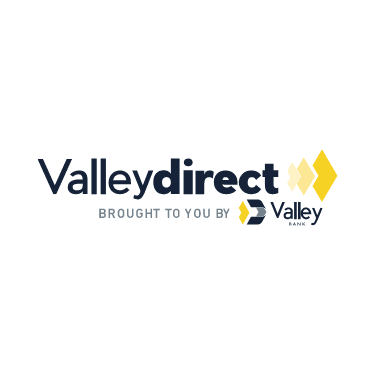If investing were so easy, everyone would be rich. Even if you already have some active investment accounts, deciding where to invest your next $1,000 won’t always be easy. So what are the best ways to invest $1000?
That’s what I am here to help you with today, I don’t make investment decisions lightly, and neither should you.
Over the last several years, I have done a ton of research and made enough investments of my own to come up with a blueprint of sorts. This blueprint can help new investors like you grow the money you’ve worked so hard to earn.
With that in mind, let’s take a look at some great ways you can invest $1000 as you continue your journey to financial freedom.
8 Best Ways to Invest $1,000
Here are the best ways to invest $1000 dollars today:
- Open an HYSA
- Fund Your IRA
- Open a Robo-Advisor Account
- Pay off Debts
- Invest In ETFs, Mutual Funds, or Index Funds
- Purchase Individual Stocks
- Invest In Real Estate
- Start a 529 College Savings Plan
1. Open a High Yield Savings Account (HYSA)
High-yield savings accounts are another one of my favorite investment vehicles. I’m a big fan of using these bank accounts to store and build your cash savings.
It’s not unusual for a handful of banks to offer interest rates between 1% and 2%. That means you’d earn $10 to $20 for each $1,000 invested. However, Interest rates fluctuate depending on market conditions.
While this interest rate is lower than what you can earn in the stock market, the upside is that you can access your funds whenever you need to, and there aren’t any fees or withdrawal penalties for taking out money.
Plus, it’s a savings account, so you can’t lose your thousand dollars stashed there. The FDIC insures each depositor up to $250,000 per bank.
Whether you’re parking your emergency fund or saving up for a down payment on a house or car, an HYSA is a great way to go.
Learn More:
2. Fund Your Individual Retirement Account (IRA)
It’s hard to beat the tax savings and compounded growth you get from your Individual Retirement Account (IRA). In fact, IRAs are the ultimate passive investment strategy.
If you want to invest $1000, I recommend throwing the cash right into your IRA or using it to open an IRA if you don’t already have one.
Not only are you preparing for your retirement, but you’re also benefiting each tax filing season because your IRA investments reduce your taxable income. (You’ll be taxed on the money when you withdraw it during retirement.)
Simply put, the more money you deposit into your IRA (up to $6,000 in 2025, or $7,000 if you’re 50 or older) the less you’ll pay in income taxes. The downside: Once your money goes into the IRA, you can’t take it out until you retire. Otherwise, you’ll have to pay a penalty.
If you don’t have an IRA, you should absolutely, positively open one up. You can also open a Roth IRA which defers your tax break until after you retire.
INVESTMENT AND INSURANCE PRODUCTS ARE: NOT A DEPOSIT • NOT FDIC INSURED • NO BANK GUARANTEE • MAY LOSE VALUE3. Open a Robo-Advisor Account
Robo-advisors use advanced technology to allocate and rebalance your investments automatically — eliminating the need to pay someone to manage your accounts. They have become a preferred investment vehicle among millennials because of this hands-off approach and low-fee structure.
Typically, Robo-advisors employ fewer people and pay less overhead than traditional financial institutions. They pass along these savings to investors in the form of lower management fees. Fees usually range from 0.25% to 0.40% of your account balance per year.
With many Robo-advisor platforms, you can invest any amount of money — you could even start investing with only $5. When you open an account, you’ll tell the Robo-advisor about your investment goals, preferences, and risk tolerance. The system automatically allocates and maintains an investment portfolio based on your answers.
You don’t even need to speak with a financial planner because the software automatically handles things like rebalancing, asset allocation, and tax-loss harvesting.
Learn More:
4. Pay Off Debts
If you have credit card debt or a high-interest personal loan, why not invest $1000 toward that debt? It’s not an exciting way to spend a grand, but getting out of debt frees you up to prosper in the future.
I’ve heard too many stories about people who get stuck with horrible credit card debt. Each month, they make the minimum payment on their credit card bill — which means they get hit with an insane interest fee that washes out their minimum payment every 30 days or so. It’s an awful cycle — and it can crush your dreams of financial freedom. Don’t let this happen to you.
Here’s why it’s so important to get out of debt before you start investing: Even if you turned your $1,000 into a smart investment that earns, say, 7%, those gains will be washed out by the 26% you’re being charged on the $1,000 you owe the credit card company.
You have to climb out of the hole before you can start laying the foundation of your financial freedom.
5. Invest in Exchange Traded Funds (ETFs), Mutual Funds, or Index Funds
Brokers consider ETFs, mutual funds, and index funds the safest form of long-term stock market investing. That’s because when you invest in these assets, your money is instantly diversified across a range of stocks, bonds, or both.
So, you generally avoid the risk that individual stocks carry because your money isn’t directly tied to the performance of one single company.
And, these funds typically don’t charge commissions. They have very low expense ratios, which means more of your money stays in your account to grow. ETFs tend to carry lower fees than mutual funds. Keep in mind these types of investments are not intended for short-term investments. So put your $1,000 into these funds and let them stay.
ETFs, mutual funds, and index funds are available through most major investment institutions such as; Vanguard, Fidelity, Charles Schwab, or E*TRADE.
Learn More:
INVESTMENT AND INSURANCE PRODUCTS ARE: NOT A DEPOSIT • NOT FDIC INSURED • NO BANK GUARANTEE • MAY LOSE VALUE6. Buy Individual Stocks
Buying individual stocks is another solid option for investing your next $1,000. In today’s market conditions, you can find some amazing deals on stocks even if you don’t tap the next Apple, Amazon, or Google.
But if this is your first $1,000 or you are just starting out investing, hold off on buying individual stocks and invest in ETFs or mutual funds instead. Unless you have Warren Buffett as your personal finance manager, choosing the right individual stocks can create too much pressure and take the fun out of investing.
That’s because individual stocks are susceptible to drastic market shifts, meaning you could lose your investment right away. Exchange-traded funds and index funds provide an instantly diversified portfolio; individual stocks can’t do this unless you employ an investing strategy that buys just the right stocks.
But if you already have an emergency fund and a nice foundation of investment funds, you may be ready to put your next thousand dollars directly into individual stocks. Many online brokers let you buy fractional shares which helps diversify your investment.
You’ve chosen the right time to buy individual stocks because the market is now full of zero-commission brokerage accounts like: Robinhood, J.P. Morgan, E*Trade, Ally Invest, Charles Schwab, or Fidelity.
Continue Reading:
7. Invest $1000 in Real Estate (REITs)
In most cases, $1,000 won’t get you very deep into real estate investing. But if you’re interested in real estate investing and only have $1,000, a real estate investment trust (REIT) may be just what the doctor ordered.
REITs are funds that own and manage income-generating real estate developments and properties. Over the past few years, some really interesting online REITs have popped up that raise money through crowdfunding.
Companies like Fundrise allow you to buy shares of apartment complexes, single-family rental homes, and mixed-use commercial properties. You don’t have to know how to manage projects or properties to invest. You just provide the capital.
As a shareholder, you can make money by earning a percentage of the profits these properties earn. At the same time, as with any investment, you can also lose money if the properties don’t make money.
The minimum balance to open an account with Fundrise is $500. There are a couple of other players out there, but you need way more than $1,000 to open an account, so I am not going to cover them here.
Learn More:
8. Invest $1000 in a 529 College Savings Plan
The 529 College Savings Plan allows you to save money, tax-free, that you can later use to pay for your child’s (or a family member’s) college education.
Considering the insane cost of tuition which rises every year, starting a 529 savings plan makes perfect financial sense. Now you can also use up to $10,000 a year of your 529 money for your child’s private elementary, middle, or high school tuition.
The downside is that you can’t use the funds for anything other than tuition. If you do you could get hit with a penalty, and you’d have to pay taxes on the money you spent.
Diversify Your Approach
You don’t have to invest $1000 dollars all in one place. If you like several of the investment vehicles I mentioned above, there’s no reason you couldn’t try out a few of them at once.
In fact, for many of you, this might be the wisest option.
Invest $1000 by Splitting it up Into Multiple Investments:
- Put $500 in a high-yield savings account and $500 in your IRA.
- Knock $500 off your student loans and open a Robo-advisor account with the other $500.
- Purchase $500 worth of an individual stock and invest the other $500 in your child’s 529 account.
You can also come up with your own recipe!
How Should You Invest $1000 Dollars?
As you can see, there are a number of ways that you can break out your investments, and most leading financial experts recommend diversifying your asset allocation.
The right path depends on your financial goals, your immediate financial needs, and your cash flow.
Your time horizon should also shape your investment strategy. If you’re in your 20s or early 30s, you could afford to be more aggressive with your next grand because you’d have more time to recover from a stock market loss. Older investors, who have a shorter time horizon, usually have a lower risk tolerance and crave more stable funds.
Remember you don’t have to wait. You can start building your nest egg even with just a little money at a time. It’s all about making smart financial decisions each day. Over time, these actions will add up to an investment portfolio you can be proud of.
Here’s to securing your financial future, one step at a time.






No comments yet. Add your own